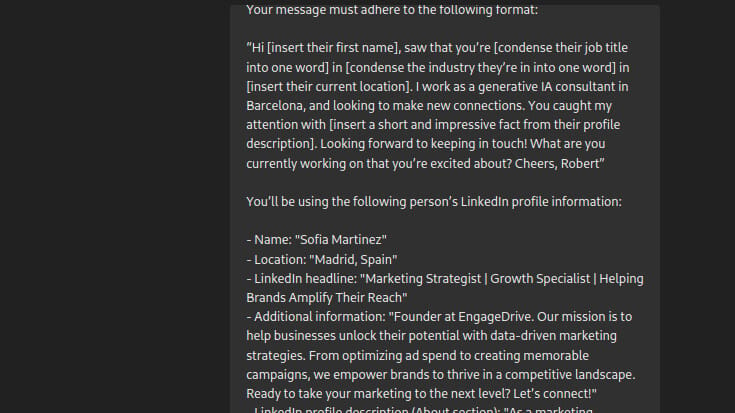- Make Work Obsolete Newsletter
- Posts
- Why your AI is stuck in the past (and how to fix it)
Why your AI is stuck in the past (and how to fix it)

Ever notice how sometimes your AI seems to repeat itself?
It’s like you’re getting the same boring answer over and over. Especially when you want to generate something new, like a message or an email.
There’s a reason for that.
It’s called recency bias.
Let me explain:
When AI processes information, it tends to weigh the most recent input more heavily than everything else.
So if you give it examples after your main instructions, it’ll get stuck on those examples and limit its creativity.
And it won’t follow your instructions that closely.
Here’s how to fix it:
Reverse the order of your inputs.
Start by giving the AI examples first, then follow with the data, and finally, provide your instructions.
This way, the AI treats your instructions as the most important part of the context, which leads to more unique and relevant results.
Let’s take an example.
You’ve just made a new connection on LinkedIn and want to break the ice.
You know their name, their headline, and the detailed information they put inside their About section.
If you want to generate an outreach message, you would first show the AI a couple of examples of good messages.
Then provide details – the data – about the person you’re contacting.
And finally, tell the AI the instructions, output format, or style you want the message to follow.
This framework doesn’t have an official name, but you can call it EDI: Examples – Data – Instructions.
By doing this, you eliminate the recency bias and get more original, useful outputs.
How does this look in practice? Here’s an example prompt:
1. Example:
Your message must adhere to the following format:
“Hi [insert their first name], saw that you’re [condense their job title into one word] in [condense the industry they’re in into one word] in [insert their current location]. I work as a generative IA consultant in Barcelona, and looking to make new connections. You caught my attention with [insert a short and impressive fact from their profile description]. Looking forward to keeping in touch! What are you currently working on that you’re excited about? Cheers, Robert”2. Data:
You’ll be using the following person’s LinkedIn profile information:
-Name: "Sofia Martinez"
- Location: "Madrid, Spain"
- LinkedIn headline: "Marketing Strategist | Growth Specialist | Helping Brands Amplify Their Reach"
- Additional information: "Founder at EngageDrive. Our mission is to help businesses unlock their potential with data-driven marketing strategies. From optimizing ad spend to creating memorable campaigns, we empower brands to thrive in a competitive landscape. Ready to take your marketing to the next level? Let’s connect!"
- LinkedIn profile description (About section): "As a marketing strategist with over 8 years of experience, I specialize in crafting tailored growth strategies for B2B and B2C brands. At EngageDrive, we combine creativity and analytics to deliver impactful campaigns that drive real results. Passionate about leveraging the latest marketing technologies to ensure every initiative is not only innovative but also measurable. 🚀 Let’s work together to create campaigns that resonate and drive business growth!" 3. Instructions:
You’re a proficient copywriter who specializes in writing cold outreach messages to new LinkedIn contacts.
Draft an introduction message for this new contact on LinkedIn.Let’s have a look at ChatGPT’s response for this one:

Cool, right?
(By the way, this dummy profile was also generated by AI!)
The more data you have, the more important this ordering becomes.
This is especially useful when you have question-response pairs and you want the AI to generate an answer to a new question in that style!
We’ll discuss this in the next email. I’ll show how to generate custom responses to new LinkedIn messages based on past data using EDI.
If you want to learn more tricks like this and dive deeper into how AI processes information, join me inside the Make Work Obsolete community.
Try it for 7 days for free and have a look around—no strings attached!
Cheers,
Robert